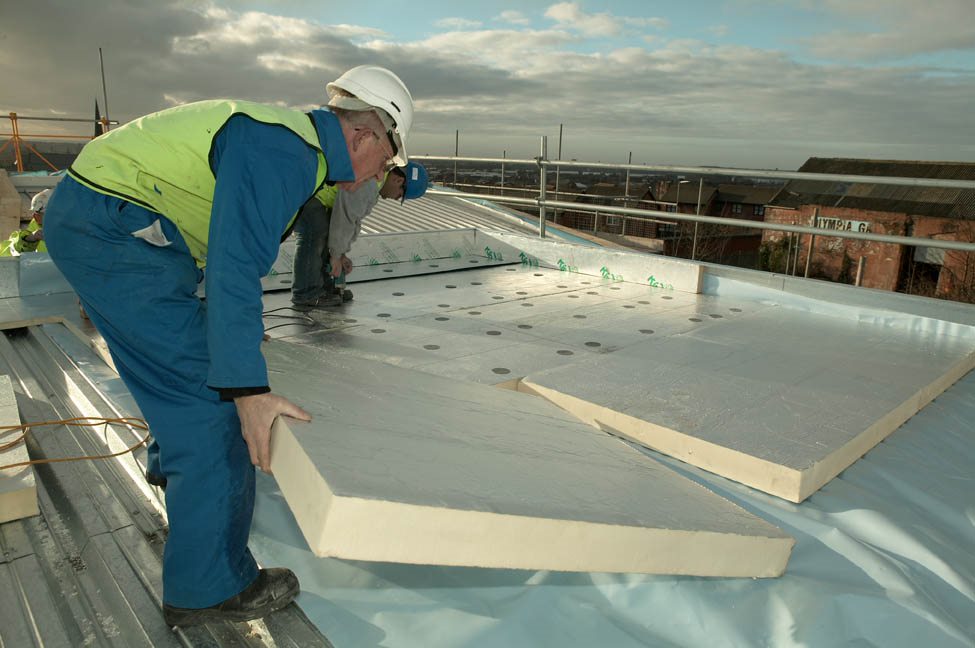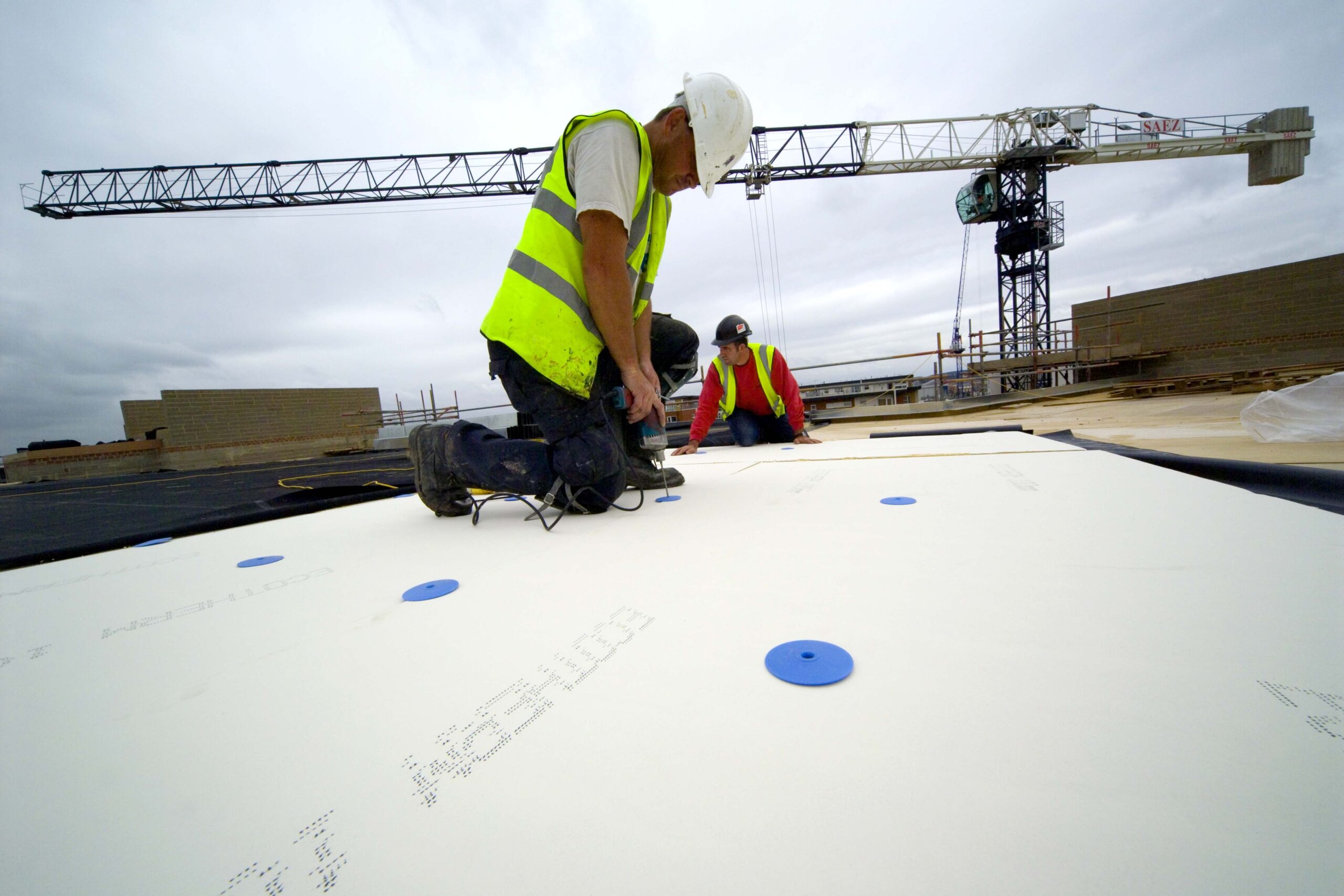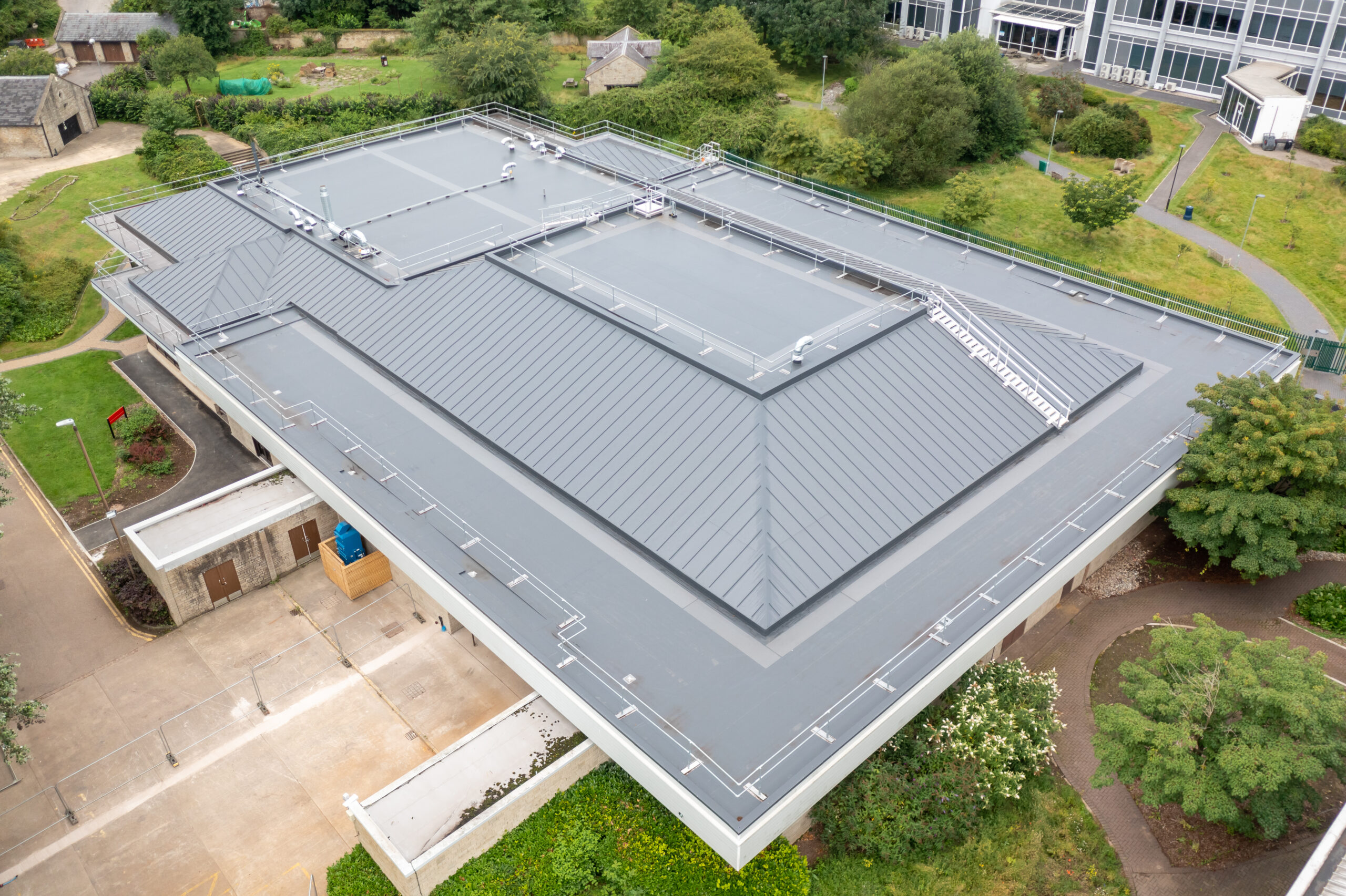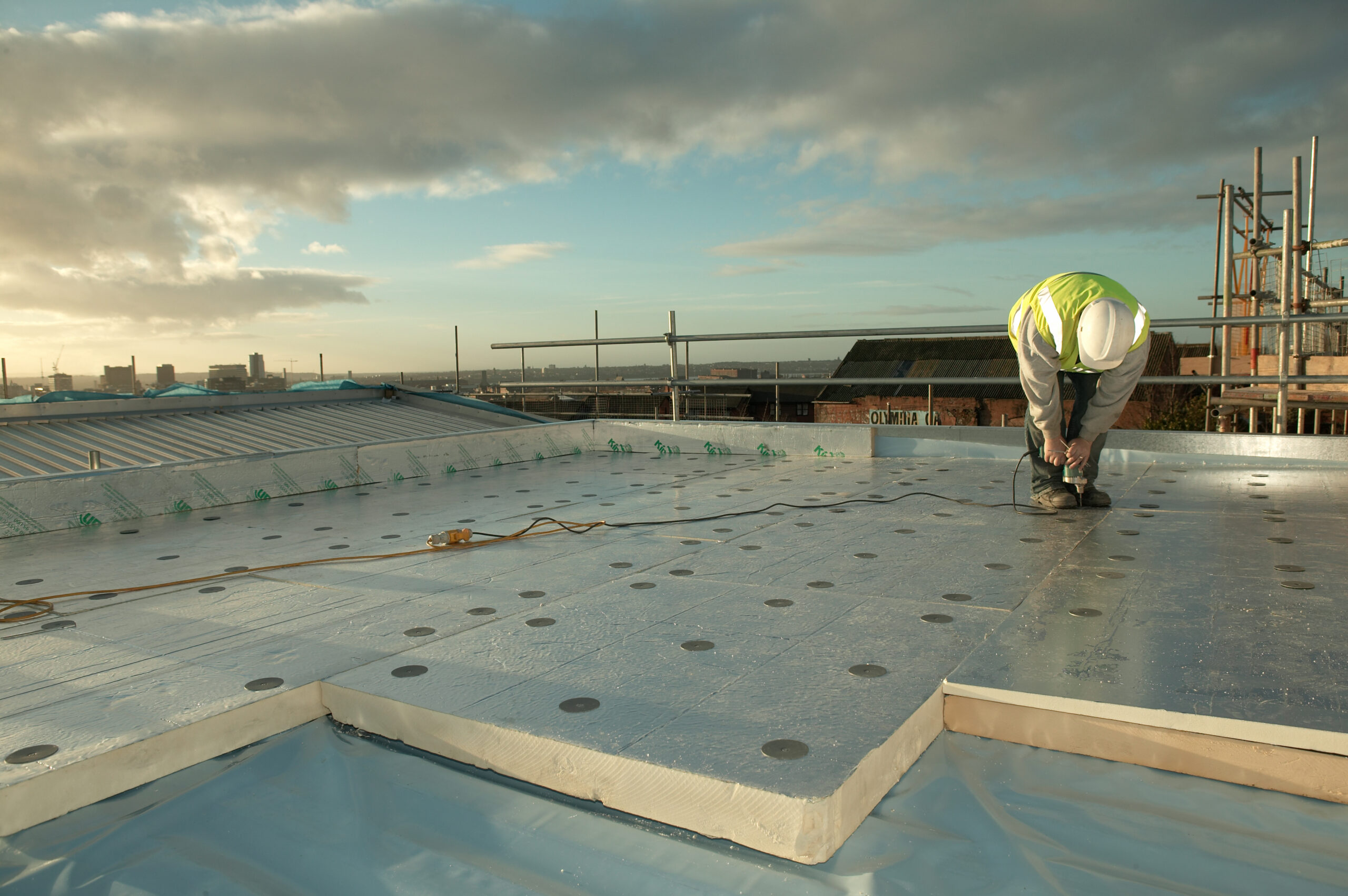PIR insulation board are the most commonly used insulation product in flat roof applications. As a result of their excellent thermal performance, PIR roofboards offer one of the thinnest methods of achieving the current U-value requirements of Building Regulations and Technical Standards.
PIR insulation products offer excellent dimensional stability and good compressive strength whilst being much lighter and easy to handle.




